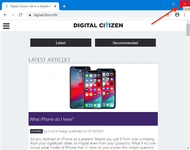There's a nice, small patch here: View attachment Close_Hot_Key.patch, but it needs testing on Windows and Linux.
I would like to be able to use cmd-W (on windows Alt-W) to act the same as the red close box for windows.
I added a few lines to genericFrame.java and it works like a champ. Hooray!
But I want to understand if it's doing the right thing when a user closes the last open window.
Right now it does what hitting all the red close boxes does, which is log the user out. Should it ask ("are you sure?" or "quit, logout, close and stay logged in"? ). If the relay browser is running, is that correct/expected behavior?
tl;dr -- it does exactly what the close box does, but should we revisit what that is?
I would like to be able to use cmd-W (on windows Alt-W) to act the same as the red close box for windows.
I added a few lines to genericFrame.java and it works like a champ. Hooray!
But I want to understand if it's doing the right thing when a user closes the last open window.
Right now it does what hitting all the red close boxes does, which is log the user out. Should it ask ("are you sure?" or "quit, logout, close and stay logged in"? ). If the relay browser is running, is that correct/expected behavior?
tl;dr -- it does exactly what the close box does, but should we revisit what that is?
Last edited:

